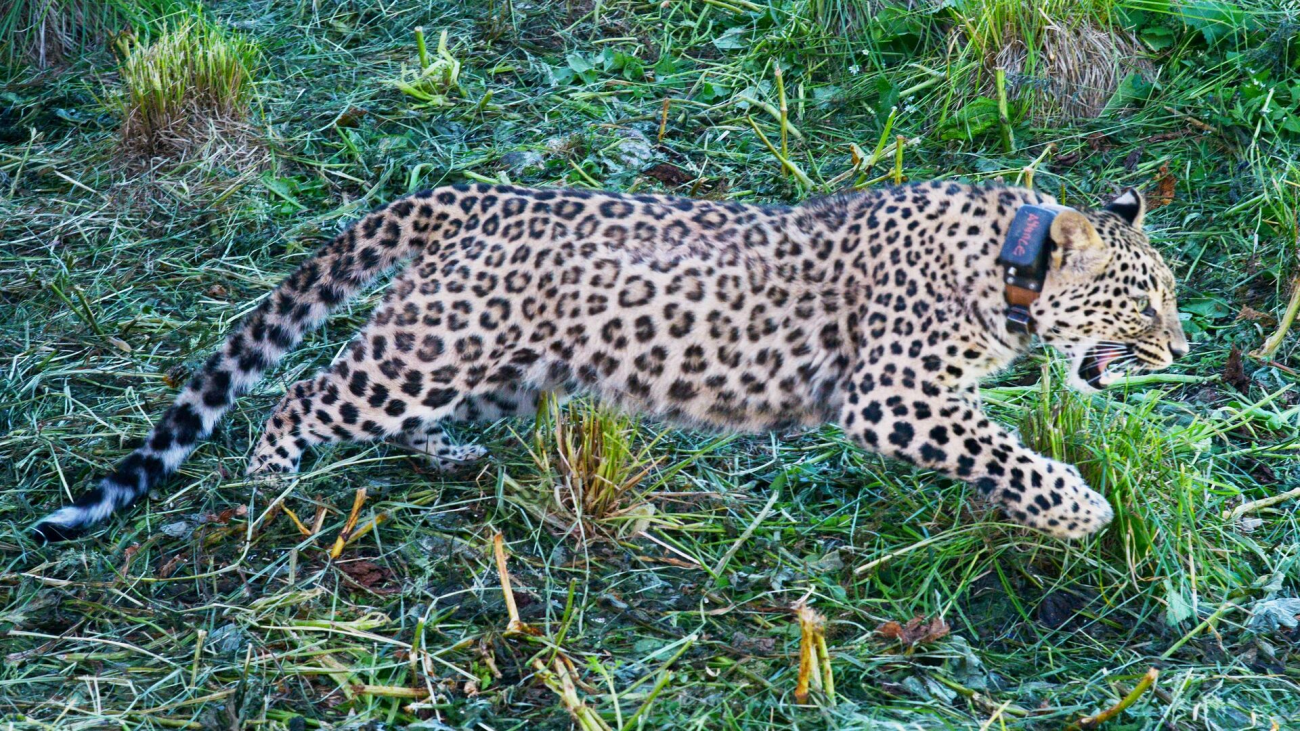
More than a year ago, on July 14, 2023, in the Bolshoy Thach Nature Park (Western Caucasus), as part of the Program for the Restoration of the Persian Leopard in the Caucasus, a female leopard named Achipse was released, but her collar stopped responding after a few days. Specialists feared for the life of the animal and tried to find the collar by the VHF signals it emitted, but these searches yielded no results.
On November 4, 2024, a resident of the city of Sochi, Igor Zavrazhin, found a discarded collar in the mountains, 59 km from the place where the leopard was released, called the phone number indicated on it and handed it over to the project specialists. Employees of the A.N. Severtsov Institute of Ecology and Evolution of the Russian Academy of Sciences determined that the collar belonged to the female leopard Achipse. The collar's self-release system worked 440 days after the leopard was released. This means that the "lost" Achipse has successfully survived the past winter and has been actively moving around. More detailed information about the cat's life and activity is yet to be "pulled" from the collar and deciphered by the members of the monitoring group at the IEE RAS.
IEE RAS thanks Igor Valerievich Zavrazhin for his attentiveness and responsible attitude to the discovery, which will allow us to collect valuable data necessary for the successful restoration of the population of the Persian leopard in the Caucasus.
The program for the restoration of the Persian leopard in the Caucasus is being implemented by the Ministry of Natural Resources of Russia with the participation of the Sochi National Park, the Caucasus Nature Reserve, the Federal State Budgetary Institution "Zapovednaya Ossetia-Alania", the Moscow Zoo with the assistance of the International Union for Conservation of Nature (IUCN). Scientific support for the Program is provided by the A.N. Severtsov Institute of Ecology and Evolution of the Russian Academy of Sciences (IPEE RAS) in cooperation with the A.K. Tembotov Institute of Mountain Ecology of the Russian Academy of Sciences (IEGT RAS), the Caspian Institute of Biological Resources of the Dagestan Federal Research Center of the Russian Academy of Sciences (PIBR DFRC RAS) and zoologists of the specially protected natural areas. Monitoring of released leopards is carried out with financial support from the Nature and People Foundation.
Related materials:
Sovetskaya Adygeya: "Female Persian leopard released a year ago has successfully adapted to the mountains of Adygea"
TASS: "Female leopard released in Bolshoy Tkhach Nature Park has successfully adapted"
Kommersant: "Sochi resident finds collar of Persian leopard released in 2023"
Komsomolskaya Pravda: "Achipse is alive! A Sochi resident found a collar of a female leopard in the forest, which was long considered dead"
Sochi 1: "Evidence found in Sochi that a female leopard released into the wild more than a year ago is alive"
Krasnodar TV channel: "After 440 days: a collar of a female leopard was found in a Sochi forest"
Kuban24: "A Sochi resident found a collar in the mountains females of the Central Asian leopard Achipse"
AiF: "Female leopard Achipse successfully adapted to the Caucasus Nature Reserve"
Kuban News: "A resident of Sochi found a collar of a female leopard Achipse in the forest"
